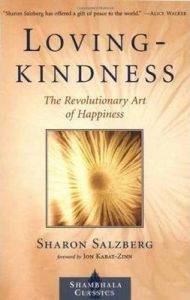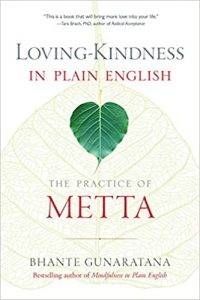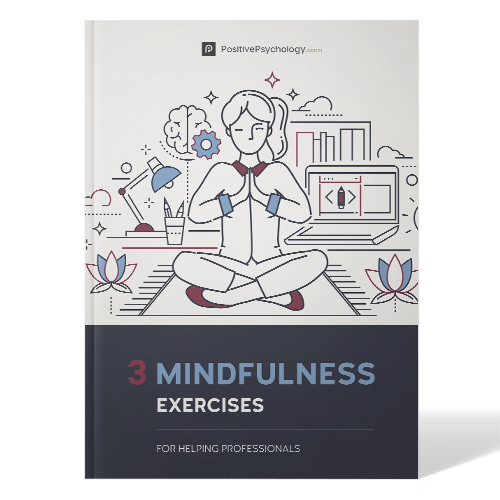What Is Loving-Kindness Meditation? (Incl. Scripts)
 In complementary and alternative medicine(CAM), meditation is considered as one of the best mind-body practices for attaining wholesome health and happiness.
In complementary and alternative medicine(CAM), meditation is considered as one of the best mind-body practices for attaining wholesome health and happiness.
With roots embedded in ancient traditions, meditation is now universally accepted as a standard self-healing and recuperative measure across cultures.
Meditation introduces us to the part of ourselves that has been missing.
Russell Simmons
Meditation techniques, however primitive in terms of their origin, are strangely appropriate and tailor-made for our current life that is busy and stressful. There are different schools of meditation and various types of practices accessible to us today, including:
- Spiritual Meditation – Which incorporates components of silence, prayers, and self-control, and aims to build a deeper connection to the Divine.
- Mindfulness Meditation – Which aims to expand happiness by enhancing self-knowledge and understanding.
- Movement Meditation – Which is a meditation involving physical movements such as walking, yoga, etc..
- Focused Meditation – Where we commit to paying undivided attention to an object or an imaginary light while meditating and learn how to calm the mind amidst the daily multitasking life.
- Visualization Meditation – Similar to guided imagery techniques, this form of meditation allows us to imagine a mind-soothing picture, for example, the open sky, or a serene river stream, and try to let our pent up emotions and negative thoughts wash away in the picturesque landscape.
- Chanting Meditation – Which includes repeating ‘Mantras’ or words linked to happiness, gratitude, self-love, compassion, and inner peace. Regular chanting of these phrases lets in positive energy into our lives and help us truly experience wellness at the very core.
In this article, we will talk about the Loving-Kindness Meditation, which is a practice tied in with self-love, empathy, understanding, and kindness. Besides discussing what it is and how it works, we will also find some great resources and scripts to get started with this unique and self-enhancing meditative endeavor.
Before you continue, we thought you might like to download our three Mindfulness Exercises for free. These science-based, comprehensive exercises will not only help you cultivate a sense of inner peace throughout your daily life, but will also give you the tools to enhance the mindfulness of your clients, students, or employees.
This Article Contains:
- What is Loving-Kindness Meditation?
- A Look at the Research
- 7 Proven Benefits
- How to Best Practice Loving-Kindness Meditation
- 4 Loving-Kindness Meditation Scripts and Mantras (+ Short Versions)
- 3 Guided Audio Meditations
- Loving-Kindness Meditation for Kids
- 6 Experts on Loving-Kindness Meditation
- 5 Recommended YouTube Videos (Incl. Metta Meditation)
- 5 Apps to Check Out
- 3 Recommended Books
- A Take-Home Message
- References
What is Loving-Kindness Meditation?
The Dhammapada says, “Hatred cannot coexist with love and kindness. It dissipates when supplanted with thoughts of love and compassion.” Loving-kindness meditation or ‘Metta’ meditation is an ultimate form of generous and selfless love towards ourselves and others.
‘Metta’ is a Pali word for benevolence, friendship, affection, and kindness. This form of meditation is one of the most soothing ways of putting together and practicing the four qualities of love – friendliness (Metta), appreciation and joy (Mudita), compassion (Karuna), and equanimity (Upekkha).
Loving-kindness meditation is free from any expectations or bindings. We do not do it for accomplishing a goal or proving a point; it is merely a process to experience and enjoy.
Metta meditation usually starts with the self, as Buddha said ‘unless we treat ourselves with love and compassion, we cannot reflect the same on others.’ Once we start experiencing self-love and self-compassion for ourselves, we can show the same to others too.
With love and kindness meditation comes self-compassion, increased focus and attention, and a deep sense of emotional strength that balance our thoughts and actions.
In early practices, loving-kindness meditation was a way of self-healing, sweetening, and pacifying the mind, and it produced positive feelings towards everything around us (Salzberg, 1997).
There are four main factors of loving-kindness meditation that accounts for its universal applicability:
- It is an all-inclusive method that works for all ages, personality patterns, and personal situations. There is no specific target population for this meditation.
- Loving-kindness meditation requires no prior set up or arrangements. It is one of the most flexible forms of meditation that we can practice anywhere, at any time, and any pace.
- It does not induce a sentimental feeling of goodwill; neither does it impose any obligation for goal fulfillment. The only thing the practitioner needs to focus is on the process.
- The effect of loving-kindness meditation lasts for a lifetime. Regular practitioners find this meditation to be an excellent way for self-disclosure, motivation, and empathy – the basic positive emotions that create a healthy mind (Smith, 2015).
A Look at the Research
Mindfulness-based self-love practices such as loving-kindness meditation, compassion exercises, and sensory awareness techniques are becoming more popular day by day.
Background studies and literature reviews on mental health and meditation suggest that these practices, alone or in combination with other forms of therapy and treatment, enhance brain activities related to emotional regulation, stress management, and immune functions (Grossman and Van Dam, 2001).
Some neuroimaging studies indicated that compassion meditation (CM) and loving-kindness meditation (LKM) regulate the functioning of the limbic system, a brain site that is in charge of processing emotions and empathy. Studies have proved that LKM is equally useful for the clinical population and can be used as a part of extensive cognitive and behavioral retreats (Lutz et al., 2009).
Loving-kindness meditation soothes the mind and reduces subjective feelings of suffering. Traditional Buddhist practices in different parts of the world consider this practice as a pathway for cultivating happiness, appreciation, satisfaction, and ultimate acceptance (Bodhi, 2005; Shen-Yen 2001).
With loving-kindness meditation comes a profound spiritual transformation and the urge to reflect on our positive emotions (Kabat-Zinn, 1990).
Studies on how loving-kindness affect the brain showed that Tibetan monks who had over 10,000 hours of loving-kindness meditation practice had strangely secure neural circuits for self-understanding and empathy. They displayed a higher degree of self-contentment and inner joy than non-meditators or non-practitioners of loving-kindness meditation.
Further studies in this field showed that during loving-kindness meditation, insula and parietal juncture, brain sites that link perception and emotions, get activated faster than in other forms of meditative practices. Both these areas create the capacity to feel and vent out feelings in a desirable way, which explains why loving-kindness meditation lits up true happiness and self-satisfaction.
7 Proven Benefits
Repeating kind words to ourselves such as “May you be well,” “May you be happy,” “May you be healthy,” etc., infuse a deep sense of self-worth instantaneously. During loving-kindness meditation, all we need to do is commit to some dedicated moments of appreciation, gratitude, and encouragement, first to ourselves and then to others.
The practice has a long-lasting impact on our mind and our body and kick-starts a ripple effect of positivity that is truly empowering. Some of the proven benefits of loving-kindness meditation include:
1. Less self-criticism
There is hardly any space left for self-criticism and self-harm once we commit to loving-kindness meditation. The method quietens our inner critic and makes us more self-accepting than ever (Frederickson, 2001).
2. More positive emotions
Studies have shown that regular practice of loving-kindness meditation increases vagal tone, a physiological marker of subjective well-being. The positivity loving-kindness meditation generates inside, attracts positive energy from the outside, and improves the quality of life and life satisfaction permanently (Kok et al., 2013).
3. Lesser self-destructive thoughts
Research has shown that seven weeks of unfiltered LKM practice induces joy, gratitude, care, and hope. Individuals with suicidal tendencies and borderline personality traits showed a marked reduction in their self-harming impulses and manifested an overall decrease in the negative symptoms (Fredrickson, Coffey, Finkel, Cohn, Pek, 2008).
4. Reduced pain symptoms
Pilot studies on patients with chronic back pain and migraine showed that when they practiced loving-kindness meditation for brief periods of 2-5 minutes per day, they showed a remarkable reduction in the pain symptoms and could accomplish their daily tasks with more ease and comfort (Tonelli et al., 2014, Carson et al., 2005).
5. More resilience
A study on people with long-term PTSD showed that engaging in deep, meaningful compassion and self-love meditations reduced the trauma and flashback episodes. Control studies showed that groups that received loving-kindness meditation scripts during their sessions could resume work sooner than participants who received other forms of guided instructions (Kearney et al., 2013).
6. Long-term benefits
Studies on the after-effects of loving-kindness meditation showed that individuals who attended the sessions felt positive and self-motivated for up to 15 months post-intervention. Compared with other meditation practices and self-help tools, loving-kindness reflection created more affection and empathy for strangers and social connections at work (Seppala and Gross, 2008).
7. Faster recovery
Clinical population such as people with schizophrenia and bipolar disorders manifested a marked reduction in negative symptoms such as hallucinations and delusions when they practiced loving-kindness meditation individually or in groups. Besides positivity and symptom reduction, the practice also improved their judgment towards others they live or work with (Johnson et al., 2011).
How to Best Practice Loving Kindness Meditation
Besides the regular benefits of meditation, including awareness, mental peace, and focus, loving-kindness meditators enjoy added advantages of increased happiness, love, and affection. What’s more, the practice is uber flexible and straightforward, which expands its accessibility over a wide range of settings – personal, professional, and spiritual (Salzberg, 2008).
Although there are no right or wrong ways of practicing loving-kindness, as long as we are committed to unconditional love and self-appreciation, here are some requisites of practicing LKM every day:
- Carve out some time from your daily schedule and commit to loving-kindness during those minutes every day. Even a small break at work would work fine. The key is a consistent commitment to Metta meditation during a particular time of the day.
- Start with yourself. Using yourself as the subject, show all your love and care to the self in the first few sessions. Repeat praise words and blessings like “May I be well,” “May I be healthy,” “May I be at peace,” etc., and try to notice what changes within you after each session.
- Set a timer for two minutes when you begin meditating. As you progress and get a firmer grasp of it, increase the time and practice accordingly. Having a timer in the first place prevents distractions or over-worrying about the minutes of training. When you utter the kind words to yourself, make sure you listen to yourself and internalize the meaning of the words. For example, try to imagine what it means to be at peace when you repeat the words ‘May you be at peace,’ or try to understand how safe you feel when you say the words ‘May you be safe,’ etc..
- Once you get the hang of self-oriented LKM, your goal would be to direct the same love and kindness to others through the Metta practice, including friends, family, relatives, or colleagues.
- After each meditation session, it is vital to spare a few minutes for recapitulating the experience. You can maintain a journal for recording how you felt before, after, and during the meditation session. Sharing the feelings helps in enhancing awareness about how the meditation helped you and provides enthusiasm to continue practicing in the future.
- The final and an essential requisite of the loving-kindness practice is subjective comfort. Unless you feel comfortable with your body, your mind, and the environment where you are practicing, you cannot fully immerse into the meditative flow. Some comfort factors include:
- Choosing the posture for meditating.
- Regulating the amount of light that is in the room. A moderately illuminated place is preferable.
- Minimizing the amount of noise around – less noise is ideal for any meditation session.
- Wearing comfortable clothes – light and stretchy clothing can give you more comfort while sitting for long durations.
- Preventing distractions – including TV, mobile phone, speaker, computer, or other gadgets. It is a good idea to keep them away during the meditation session.
Some common phrases used in Loving-Kindness Meditation:
| Self-Oriented Loving-Kindness Phrases |
|---|
| 1. May I be strong. 2. May I have the power to accept and forgive. 3. May I live and die in peace. 4. May I be safe. 5. May I love and appreciate others boundlessly. |
| Loving-Kindness Meditation Phrases for Others |
|---|
| 1. May you be safe. 2. May you live long. 3. May you achieve what you want and deserve in life. 4. May you have the power to accept your anger and sadness. 5. May you be healthy and happy always. |
4 Loving Kindness Meditation Scripts and Mantras (+ Short Versions)
As mentioned earlier, loving-kindness meditation starts with us. Here you will find a number of scripts to guide your meditation.
1. Self-Oriented Loving-Kindness Meditation Script
The benevolence and softness included in this 15-minute loving-kindness script will take you through a meaningful journey of self-understanding and unmitigated self-love.
A full script can be found in our Positive Psychology Toolkit.
Below is a brief portrayal of the method:
| Guided Instructions for Loving-Kindness Meditation (Self) |
|---|
|
2. Loving-Kindness Meditation for Others
Extending genuine acceptance and goodwill to others fulfills the purpose of LKM. Whether family, friends, coworkers, or community members, feeling and empathizing for people we know and coexist with is vital for self-enhancement. Below is a short script of the practice:
| Guided Instructions for Loving-Kindness Meditation (Others) |
|---|
|
3. Guided Meditation for Loving-Kindness and Compassion Prayer
Love, kindness, compassion, empathy, and awareness – all of these go hand in hand. The compassion prayer is a powerful technique to radiate positive energy within you and spread the same to others around. Prominent researchers, including Tara Brach, Paul Harrison, and David Foley, mentioned the Compassion Prayer in their works. Below is a brief overview of this exercise:
- Find a comfortable posture – ideally sitting straight or lying on your back. Close your eyes and take a few deep breaths. Bring your mind and body into a calm state and try to feel your contact with the surface on which you are sitting/lying.
- Once you feel relaxed and aware of the present moment, start thinking about someone with who you share an emotional connection – it may be your spouse, children, parents, or friends. Notice how you feel as you start thinking about this person for who you feel so strongly.
- Next, wish something good for that person and you could use words like – ‘I wish all the happiness for you’, ‘I wish that you never have to suffer’, ‘I wish that you are always loved’, ‘I wish you know that I will always be there for you’.
- As you wish such beautiful things for the person, try to imagine yourself telling this in person, and think about how the other person would have reacted to your prayers.
- Do this as a daily practice. You can choose different persons for each session or think about the same person every day. The choice is entirely yours to make.
After each session, journal your experience and observe how you feel. When this meditation becomes a part of your daily life, you naturally feel more affectionate and loving towards yourself and others and internalize the positivity readily.
4. A Short Script on Metta Meditation
The secret of the effectiveness of Metta meditation is that it is unified and eliminates the barrier between ‘I’ and ‘you.’ This short script on Metta meditation works equally well for expressing love to others and yourself in the same way.
The steps are simple:
- Sit comfortably and take a few deep breaths to relax your body.
- Tune in to the moment and begin with expressing gratitude to yourself for letting you commit to this beautiful loving-kindness practice today.
- When you are ready, close your eyes and visualize yourself being loving and empathetic towards others. Notice how it makes you feel.
- Next, thinking about yourself and everyone you know say – ‘May you have the strength to overcome all your struggles’, ‘May you always be honest and truthful’, ‘May you get all the happiness you deserve in life’, ‘May you always be surrounded with people who love you and care for you.’
- At this point, do not try to discriminate who these good wishes are for. Allow the power of these positive contemplations to spread in your system and reflect in your persona.
- Open your eyes after a few deep breaths, notice your feelings, and end the session by uttering ‘Namaste’ with joined hands.
3 Guided Audio Meditations
More than just meditation, loving-kindness practices are heartfelt wishes for ourselves and others. The Metta meditation method systematically cultivates our inner potential to feel good and emit positive vibes around us. Silently repeating words of kindness every day is a simple yet profound practice of incorporating friendliness and compassion into our daily living.
Here are some relevant loving-kindness audio scripts that you may like:
1. Guided Metta Meditation by Gil Fronsdal
Gil Fronsdal is a veteran meditation trainer and insight guide working in this field since 1990. His meditation scripts on loving-kindness and Metta are simple, sincere, and relaxing as a whole. Here is an example of one of his texts, which is ideal for beginners as well as experienced meditators.
2. A 15-Minute Audio Script On Guided Loving-Kindness
This audio meditation by Emma Seppala, author of the famous book ‘The Happiness Track,’ provides deep and meaningful understanding about the power of love in real life. You can listen and follow the audio script.
3. Guided Meditation By Tara Brach
Tara Brach is a famous scientist and author whose works on meditation, self-love, and self-care is followed by professionals at all levels. This guided meditation by Brach calls for the openness of heart and expansion of the mind through experiencing and expressing love and kindness.
Loving-Kindness Meditation for Kids

Scientists agree that if Metta meditation were encouraged from early school years, there are higher chances of kids growing up to be more positive and well-balanced individuals.
Introducing loving-kindness meditation in schools and allied educational sectors works beautifully in bringing children together, establish a strong student-teacher relationship, and students become familiar with feelings of love and unconditional support.
Metta meditation for children helps them to develop close contact with their inner feelings. Teachers and school counselors can implement the programs in the classroom or on an individual basis. However, studies have shown that group meditation works better than personal retreats for school children.
One of the most popular loving-kindness meditations for children is the ‘hugging’ method (Salzberg, 2016), where:
- Children come as a group and relax for some time, to make sure they are comfortable with the process.
- After the teacher guides them through what it means to be loving and affectionate, the children close their eyes and imagine themselves to be near someone they love – for example, grandparents, siblings, or even their favorite toys.
- The teacher then guides the kids to imagine that they are giving a tight hug to the person in his thoughts.
- The facilitator takes them through a complete process of feeling and expressing love to others and after the session ends, asks them to narrate how they felt after hugging their loved ones.
This loving-kindness intervention was popularized by Christine Carter, an eminent sociologist, and researcher, and has been successfully implemented on children above four years of age, across multiple cultural backgrounds.
6 Experts on Loving-Kindness Meditation
1. The Work of Jon Kabat Zinn
Jon Kabat Zinn, the father of modern mindfulness, is an American professor who created Mindfulness-Based Stress Reduction Techniques (MBSR). Kabat Zinn spent a significant portion of his academic and research life with Buddhist and Zen meditators.
His principles, with a close connection to ancient spiritual meditation practices, has been widely accepted as channels of treatment in healthcare, medical fields, and holistic therapies. In 1979, Kabat Zinn founded the Stress Reduction Clinic at the University of Massachusetts, where he spread his secular principles on Mindfulness, Hatha Yoga, and Self-love meditation.
Zinn’s prime focus is to help people deal with stress and toxic life circumstances by themselves. His practices aim at restoring the mental balance that ensures subjective well-being. Methods of yogic mudras, asanas, and Buddhist meditation help Jon to integrate science with spirituality to let practitioners attain ultimate tranquility.
In his book ‘Full Catastrophe Living: Using Wisdom of Your Body and Mind to Face Stress, Pain, and Illness,’ Kabat Zinn mentioned some of the best meditation and mindfulness practices with detailed instructions and guidance. His paths include movement meditation, chanting, and asanas, that are great as stand-alone practices or as adjuncts to other forms of therapy (Delta, 1991).
2. Kristin Neff’s Work on the Topic
Kristen Neff gained popularity after her works on self-compassion. An Associate Professor of Educational Psychology and a pioneer of applied positive psychology, Dr. Neff delved deep into the causes and implications of loving-kindness meditation, compassion practices, and gratitude exercises.
Dr. Neff’s works on self-compassion in her book “Self-Compassion: The Proven Power of Being Kind.” She mentioned pieces of evidence where researchers found stable connections between compassion, kindness, and empathy.
Dr. Kristen Neff indicated in her works that meditation practices like loving-kindness, compassion, and transcendence, goes hand in hand. To attain complete mental peace, we must commit to sessions that combine all forms of self-love and compassion meditations.
Kristen Neff mentioned that studies on large-scale samples proved that self-compassion and loving-kindness meditation practices were positively correlated with emotional control and solution-focused coping. Her studies also explored how loving-kindness meditation helps in sustaining long-term romantic relationships that are mutually respectful and understanding (Neff, Hsieh, and Dejitterat, 2004).
3. Barbara Fredrickson’s Work with Loving Kindness
Barbara Frederickson is an American Professor of Social Psychology. Her work on the broaden-and-build theory of positive emotions gained massive popularity across all areas of mental health. A published author and a proclaimed humanist, Barbara have significantly contributed to connecting meditation, health, and psychological wellness.
While testing her hypothesis on the broaden-and-build theory of positive emotions, Barbara and her team found that when individuals received interventions with loving-kindness meditation retreats, they showed an increase in positive emotions and thought-regulation.
Besides the mental health benefits, her research also indicated how LKM or Metta exercises could improve cardiovascular health, metabolic functioning, and restore hormonal balance (Fredrickson, 2008; Fredrickson et al., 2013).
Barbara’s book ‘Love 2.0‘, published in 2013, shed some light on why love is the ‘supreme emotion’ that can surpass all negative energy and benefit us from the cellular level. Her studies provide valuable insight into the role self-expression plays in managing anger, impulses, and promotes self-exploratory behavior. Barbara’s works established loving-kindness as a secular practice that can relieve sadness, stress, and burnout.
4. Sharon Salzberg and Loving-Kindness Meditation
Sharon Salzberg is a famous author and teacher of Buddhist meditation. She is the co-founder of the Insight Meditation Society, an organization dedicated to spreading awareness about the benefits of meditation at all levels.
Sharon Salzberg’s books including Loving-kindness: The Revolutionary Art of Happiness, A Heart as Wild as the World, Real Happiness – The Power Of Meditation, etc., vividly speaks about her encounters with veteran meditators all over the world and the way they enlightened her.
Salzberg has put forth several meditation practices and is one of the most skilled Vipassana teachers today. From individual stress-release sessions to group therapy or kids meditation programs, Salzberg offers priceless resources for meditators of all ages and personalities.
5. Tara Brach on the Topic
Tara Brach is one of the proponents of Buddhist meditation, an American psychologist, and a teacher at the Insight Meditation Community at Washington.
She has years of experience of avid meditation, yoga, and mindfulness practices, and is a dedicated trainer of the same. Her works on radical acceptance, loving-kindness, and insight meditation are used by professional therapists to help sufferers of depression, trauma, and personal loss or grief.
Brach’s prime focus was to spread the awareness on how we can sail through tough times and stressful life events with meditation, much of which manifests in her book ‘True Refuge: Finding Peace and Freedom in Your Own Awakened Heart.’
6. Loving Kindness Meditation and Thich Nhat Hanh
Thich Nhat Hanh is a Buddhist preacher and a spiritual leader who coined the term ‘Engaged Buddhism’ in his book ‘Vietnam: Lotus in a sea of fire.‘ Hanh is an activist in peace movements and has gone miles in spreading his words on nonviolence, inner peace, spiritual enhancement, and love for animals.
His meditation on love and kindness originates from the Visuddimagga or the Path of Purification, which is an ancient Buddhist manual for maintaining the balance between body and mind. Nhat Hann has published over a hundred books on mindfulness, meditation, and yoga, in more than 70 languages, including English. His contribution to the widespread popularity of modern-day meditation is massive.
Thich Hanh is among the few meditators who have been successful in incorporating meditation within the modern lifestyle in such a way that they can coexist peacefully and open the doors to conscious and awakened living.
4 Recommended YouTube Videos (Incl. Metta Meditation)
These videos are all highly recommended as tools to assist with LKM.
1. Loving Kindness Meditation For Overall Relaxation
This meditation is a classic loving-kindness practice that the UNH Health and Wellness popularized. The method guides us to gain a deep sense of self-appreciation and is useful for everyone who wants to soothe their minds and get rid of unnecessary daily stress and worries.
2. Guided Loving-Kindness Meditation for Anxiety
This guided meditation is designed to help us enhance our happiness and improve the way we perceive our internal and external environments. By repeating words of love and kindness to ourselves and others, we get conditioned to attend to our positive intentions only and become naturally immune against worries and distress.
3. Loving Kindness Meditation – The Healing Power of Love
Introduced by Jack Kornfield, the healing power of love meditation redirects our energy to those parts of the mind and body that are most affected by stress. The gentle instructions act like a balm, and the whole method is considered a ‘master healer’ for heartbreaks, personal losses, and interpersonal conflicts.
4. Guided Metta Meditation by Ajahn Brahm
Ajahn Brahm is an experienced Buddhist preacher and meditator who has spent years of his life exploring and unleashing the benefits of meditation and self-acceptance. His guided Metta meditation will help you get into the flow of exploring the Divine inside you and uncover the love that you deserve to receive from yourself and others.
5 Apps to Check Out
Keeping track of the amount of meditation we need or estimating how much we benefit from, is no longer an issue owing to the scientific and technological advancements in the past few years. Here is a list of some of the applications that come in handy for sustaining the motivation for daily meditation.
1. Insight Timer
With more than 10,000 guided meditation scripts from over 2000 proclaimed meditators and teachers like Sharon Salzberg, Jack Kornfield, and Tara Brach, the Insight Timer is a lucrative application that we can follow for daily practice and commitment.
It has options for participating in group meditations or individual sessions, and users also have the flexibility to choose a teacher whose guidance and instructions they can follow for their daily practice.
2. Sattva
Sattva is a free mobile application containing some of the most cutting-edge meditation techniques and guided scripts. It is a contemporary technical advancement and has thousands of users, including celebrities, who have used the software and enjoyed its benefits thoroughly.
The Sattva application is specially designed to help individuals estimate their level of well-being and check how meditation impacts the same.
3. Headspace
You might have heard about this application before. Headspace is one of the most popular meditation applications available for most of the leading smartphones and gadgets.
It is free software and has options for a premium upgrade that has more features. With introductory meditation inductions, short exercises, health tracker, buddy system, and progress reports, Headspace comes with a unique set of features facilitating awareness, practice, and evaluation of meditation in real life.
4. Enso
Enso is a meditation application designed for experienced practitioners and regular meditators. The app comes with specific features such as timers that users can set according to the time intervals they choose. Enso is a flexible, reliable, and a heavily used meditation app for professional meditators today.
5. Calm
The Calm App works wonders for nighttime relaxation and stress release. It consists of sleep stories, sleep music, and guided sleep meditation scripts that we can use during bedtime to get a deep and undisturbed sleep.
Calm is useful for patients with insomnia or chronic sleep disorders. With exclusive features such as sleep tracks, weekly practices, and focus exercises, Calm lives up to its name.
3 Recommended Books
1. Lovingkindness: The Revolutionary Art Of Happiness – Sharon Salzberg
Sharon Salzberg, in her book on loving-kindness meditation, speaks about the sense of liberation one obtains after commitment to daily practice.
Her work emphasizes radical acceptance, wisdom, strength, and joy.
The Metta meditation practices Salzberg mentioned in her book is evidence-backed, tested, and practically useful in today’s context.
An excellent source for self-help and compassion, Loving-Kindness – The Revolutionary Art Of Happiness is a must-read for everyone, including youngsters.
Find the book online.
2. Real Love: The Art of Mindfulness Connection – Sharon Salzberg
A masterpiece by Salzberg, the book ‘Real Love‘ is a creative compilation and toolkit for mindfulness and meditation practices that help in strengthening relationships and mutual connections.
The book has three sections, each explaining a unique aspect of meditation such as focused care and attention, and emotional habits that are beneficial for us.
The book is a great way to tune in to our innermost feelings and declutter our relationships with loved ones.
Find the book on Amazon.
3. Loving-Kindness in Plain English: The Practice of Metta – Bhante Henepola Gunaratana
Author Bhante Gunaratana, in his book ‘Loving-Kindness in Plain English,’ brings forth a clear picture of how we can benefit from cultivating the habit of daily meditation.
His signature anecdotes on happiness, systematic and step-by-step meditation practice, and conversational messages on Buddhist principles and ideologies make this a must-read for anyone interested to know and practice meditation.
Find the book on Amazon.
A Take-Home Message
Buddha said:
The mind is everything. What you think you become.
With meditation, we gain the power to train our mind and tame the negative thoughts that bring us down. Meditation does involve some training and practice, but the purest and most authentic quality of any meditative practice is felt on the inside. Love and compassion are embedded in all traditions and exercises, and together, they contribute to ultimate happiness and well-being.
We hope you enjoyed reading this article. Don’t forget to download our three Mindfulness Exercises for free.
- Analayo. Satipatthana: The Direct Path to Realization. Birmingham, U. K: Windhorse; 2003. [Google Scholar]
- Analayo, 2003: The Direct Path to Realization.
- Baer, 2003 : Mindfulness training as a clinical intervention: A conceptual and empirical review.
- Bishop, 2002 : What do we really know about Mindfulness-Based Stress Reduction?
- Bodhi, 2005 : An anthology of discourses from the Pali Canon. Boston, MA: Wisdom Publications.
- Brown, Ryan, Creswell, 2007 : Mindfulness -Theoretical foundations and evidence for its salutary effects.
- Buddharakkhita, 1995 : Metta – The philosophy and practice of universal love. Kandy, Sri Lanka: Buddhist Publication Society.
- Carson, Keefe, Lynch, Carson, Goli, Thorp, 2005 : Loving-kindness meditation for chronic low back pain: Results from a pilot trial.
- Deater-Deckard, Bell, 2007 : Biological systems and the development of self-regulation: Integrating behavior, genetics, and psychophysiology.
- Zak, Barraza, 2009 : Empathy towards strangers.
Let us know your thoughts
Read other articles by their category
- Body & Brain (41)
- Coaching & Application (49)
- Compassion (27)
- Counseling (46)
- Emotional Intelligence (23)
- Gratitude (16)
- Grief & Bereavement (19)
- Happiness & SWB (35)
- Meaning & Values (26)
- Meditation (21)
- Mindfulness (42)
- Motivation & Goals (42)
- Optimism & Mindset (33)
- Positive CBT (24)
- Positive Communication (21)
- Positive Education (41)
- Positive Emotions (28)
- Positive Psychology (33)
- Positive Workplace (38)
- Relationships (31)
- Resilience & Coping (33)
- Self Awareness (21)
- Self Esteem (38)
- Software & Apps (23)
- Strengths & Virtues (28)
- Stress & Burnout Prevention (27)
- Theory & Books (42)
- Therapy Exercises (30)
- Types of Therapy (53)







What our readers think
Thank You for this incredible article on Love-Kindness Meditation.
It is very helpful and I will apply it to my personal and professional life.
Thank you for such a comprehensive guide to loving-kindness practices. I am new to loving-kindness. This article gave me a lot to work with as I create and develop an approach that works for me. I look forward to applying these principles to my life.
Thank you for taking the time to write this comprehensive article on Loving Kindness Meditation. It was very helpful.
One of the most comprehensive and accessible reviews of different teachers’ approaches. Thank you
Thank you for this beautifully extensive article on the practice and research on loving kindness meditation. The world really needs this….
Thanks – a through study of meditation should include the 112 techniques listed in Paul Reps book, Zen Flesh, Zen Bones and explained by OSHO in The Book Of The Secrets.
NOTE: Your buddha quote is listed online as a FAKE BUDDHA QUOTE. We really don’t know what THE BUDDHA said; the first Buddhist writings were hundreds of years after his death.
The Buddha’s teachings were collected 3 months after he passed away at the First Buddhist Council at Rajagaha. The huge body of the Buddha’s teachings were committed to memory and passed down orally from teachers to students since this was the way knowledge was transmitted in India. So it is incorrect to say that we really don’t know what the Buddha said. The writing down of the teachings in the first century BCE merely recorded what had been committed to memory by the monks.